Can trees damage your roof? Absolutely! Homeowners enjoy having full grown trees on their property for many reasons, including shade, and décor. But trees can have damaging effects on roofs, and no-one wants to have a roof replacement, if they can prevent it! So how can your trees damage your roof, and how do you prevent this?
In this article, we’ll cover some of the potential harm trees can do to roofs, and how you can prevent this damage.
Table of Contents
Debris
Blocking Water Flow
Most of the time, leaves fall on the ground, but sometimes they fall on roofs. These leaves may seem innocent, but they can cause profound harm. For instance, normally a roof will shed water quickly, leaving minimal exposure to moisture. Leaves can block water flow and lead to more exposure to water. The problem is exacerbated for flat roofs, as their shallow pitch allows roofs to collect water in puddles. These puddles can cause expensive roofing problems, as moisture seeps into the roofing materials. Even for tile or shingle roofs, however, the leaves soak up and trap moisture, degrading the material around them.
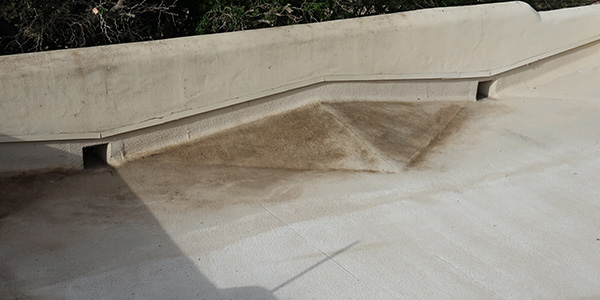
Plant Growth
Water and leaves can create an environment for vegetation to grow. Mold could grow on your roof, which can cause big problems for air quality and structural integrity. You may also have moss on your roof, which can trap moisture, exacerbating water damage. In some cases you can even have grass or weeds growing on your roof!
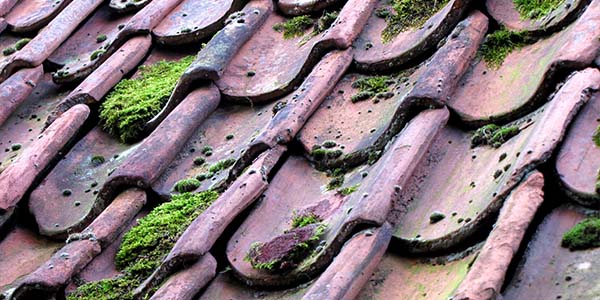
Sap
Tree sap can be detrimental to a roof’s longevity and appearance. This sticky substance, often containing corrosive elements, can attract dirt and debris, leading to the formation of a stubborn, hard-to-remove layer. Over time, this can compromise the roof’s aesthetic appeal and hinder its ability to reflect sunlight. Additionally, tree sap can accelerate the aging of roofing materials, potentially causing premature deterioration and necessitating costly repairs or replacements.
Tree Impacts
Minor Scraping
When trees are next to your house, wind can cause tree branches to brush against roofs, which can accelerate degradation. On flat roofs, branches can scratch and compromise the waterproofing layers, paving the way for leaks. Tile roofs are vulnerable to surface abrasions, cracks, and dislodging tiles, impacting both aesthetics and functionality. Shingle roofs can suffer granule loss and surface abrasions, accelerating wear and tear. Over time, these seemingly minor scrapes can compromise the integrity of the roofing materials.
Falling Trees and Branches
Falling trees, or branches can inflict severe damage on roofs. Whether due to storms or weakened structures, large branches or entire trees may crash onto roofs, causing structural harm, punctures, or even collapse. Such impacts can breach the roof’s protective layer, leading to water infiltration and subsequent interior damage. In the case of a falling tree, evacuation of the building is recommended.
Pests
Proximity of trees to homes can attract pests like squirrels. These agile creatures may seek shelter or access points for nesting. Once on the roof, they damage shingles, chew through materials, and create entry points, posing potential threats to the structural integrity of the roof and home.
Animals that are commonly suspected of causing roof damage include:
- Squirrels
- Raccoons
- Mice and rats
- Possums
- Insects (termites, ants, etc.)
- Snakes
- Chipmunks
- Cats
Termites
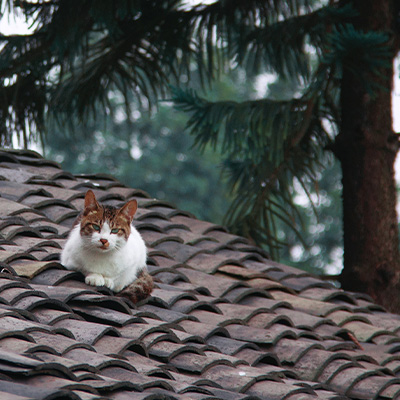
Termites pose unique threats to roofs as they can nest in the roof decking. These wood-destroying insects can infiltrate roofing materials, causing hidden damage that weakens the roof’s support. Often unnoticed until significant harm is done, termite infestations greatly compromise the overall stability of a home.
While you don’t need a tree to have termite problem, trees can attract termites that can decide to set up shop in your roof decking, and consequently your whole house.
Solutions
Can Trees Damage Your Roof? Absolutely! How to Prevent Damage!
Tree trimming is a proactive solution to mitigate debris-related roof issues. Regular pruning helps control the accumulation of leaves, branches, and other debris, reducing the risk of clogged gutters and drainage systems. This preventative measure ensures a cleaner, more efficient roofing system, promoting longevity and minimizing maintenance concerns.
In addition to preventing debris issues, tree trimming impedes access to critters seeking refuge on roofs. By eliminating overhanging branches and close entry points, it becomes harder for pests like squirrels or raccoons to invade homes.
Beyond debris and critter control, keeping trees from hanging over a roof minimizes the risk of limbs impacting roofs during storms. Regular pruning eliminates overhanging branches, reducing the likelihood of wind-driven or heavy limbs causing damage.
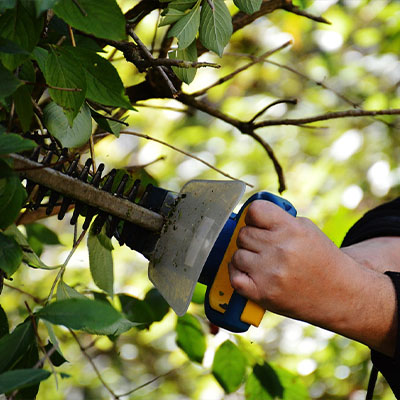
Controlling Tree Growth
Pruning a tree strategically during its early growth stages in order to direct its growth away from a house is a good technique for reducing overhang. By shaping the tree away from structures, the risk of branches impacting roofs or causing structural damage during storms is significantly reduced. This method promotes a healthier and more controlled tree structure, enhancing longevity while safeguarding property.
Removal of Unhealthy Trees
Sadly, when a tree exhibits signs of poor health or poses a risk of falling, removal is the only option. Eliminating a compromised tree minimizes the threat of potential impacts, as unhealthy trees can easily break during monsoon storms. This can also be a good method for controlling the risk of termites, as dead or decaying wood is especially attractive to them.
Cleaning Debris
It’s wise to clean debris off your roof. Leaves, branches, and other debris can clog gutters and impede water drainage, potentially causing water damage and structural issues. When maintaining a clear roof surface, water can easily run-off, preventing leaks and preserving the integrity of roofing materials. This proactive approach not only extends the lifespan of the roof but also protects the entire structure, contributing to a well-maintained and resilient home.
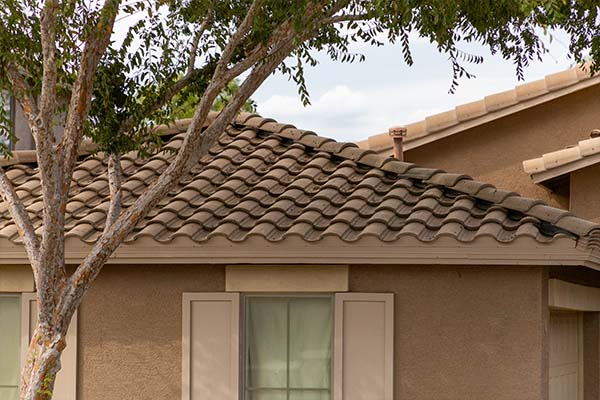
Safely cleaning your roof involves using methods like regular sweeping or using a leaf blower to remove loose debris. For moss or stubborn stains, consider using a pressure washer. It’s more advisable to clean debris off a flat roof due to it’s naturally walkable surface, and the importance of good water-flow. Pitched roofs are more difficult to walk on, and it’s advised to call a professional.
Removing Sap
The first step to removing sap from a roof is to begin by letting the sap dry. Then gently scrape it off with a plastic putty knife. For remaining residue, use a mixture of warm water and mild soap, applying it with a cloth or sponge. Thoroughly rinse the area with clean water. This method ensures effective sap removal without causing damage to the roof. Exercise caution and avoid abrasive tools or chemicals that may harm roofing materials during the process.
Trimming overhanging areas, and investing in proper cleaning are the best ways of mitigating roofing issues. These steps are especially important for flat roofing. With these steps, you can help your roof and tree coexist perfectly, without issues!

